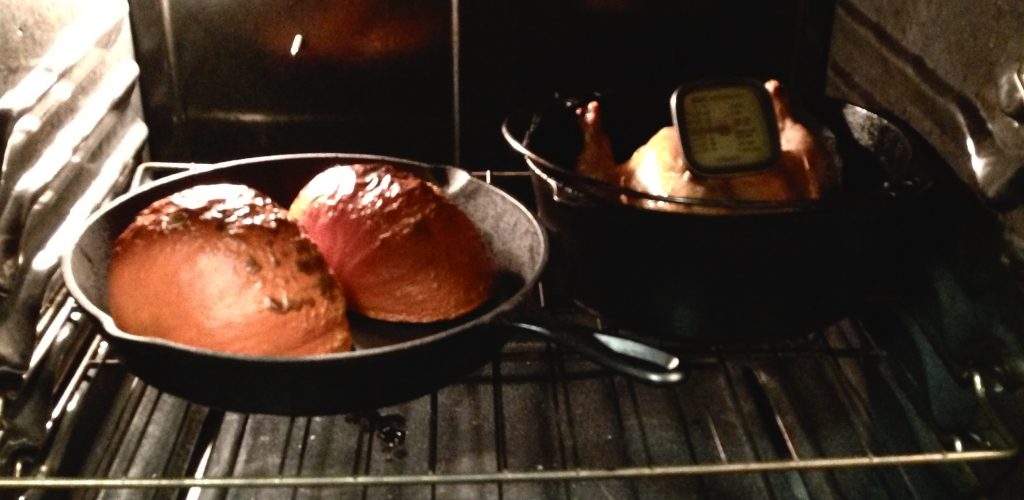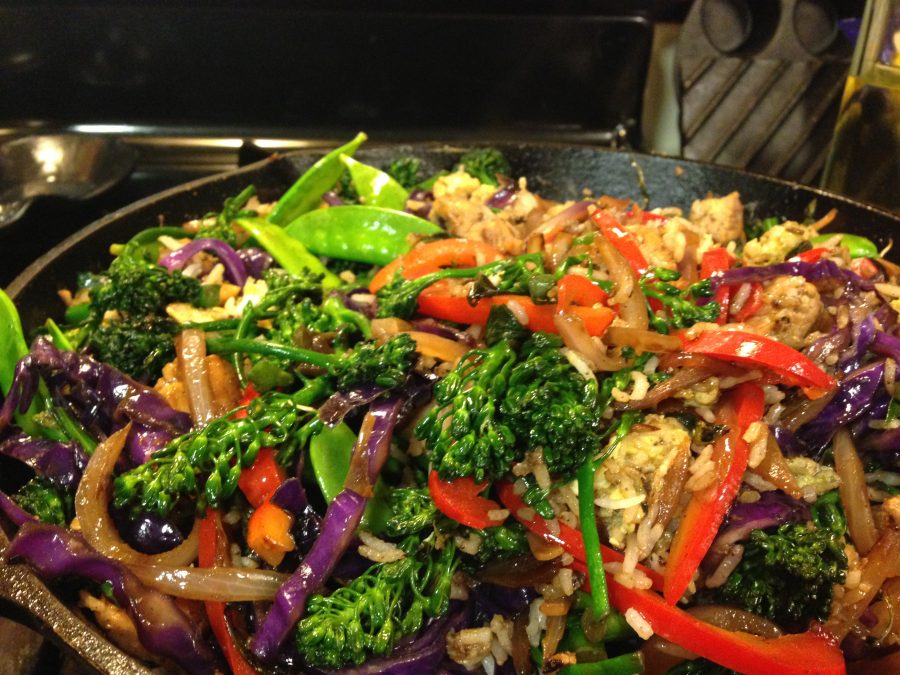I grew up in a cast-iron family. My mom always had one on the stove or in the oven, and my grandmother regularly whipped hers out to fry up potatoes to go with my grampy's steaks. One of the very first kitchen supplies I ever purchased was my own set of big and little cast iron pans (this was before they came pre-seasoned, and I was surprised to learn they start out grey!), which I still use daily, and I bought my husband a set of cast iron pans on our first Valentine’s together as a couple. It’s not unusual for us to have three of them going at a time – on the stove, in the oven, sometimes also over the fire pit – they’re such versatile, classic cookware! We've acquired quite a collection over the years (especially as gifts) including big dutch ovens, and a griddle/skillet slab that fits on the stovetop.
So, I forget that most people consider cast iron a foreign concept. Half of those who have the pans love them, but the other half regard them as a sort of nebulous kitchen decoration. I’m here to help you get over that confusion and fear and put your iron in the fire…
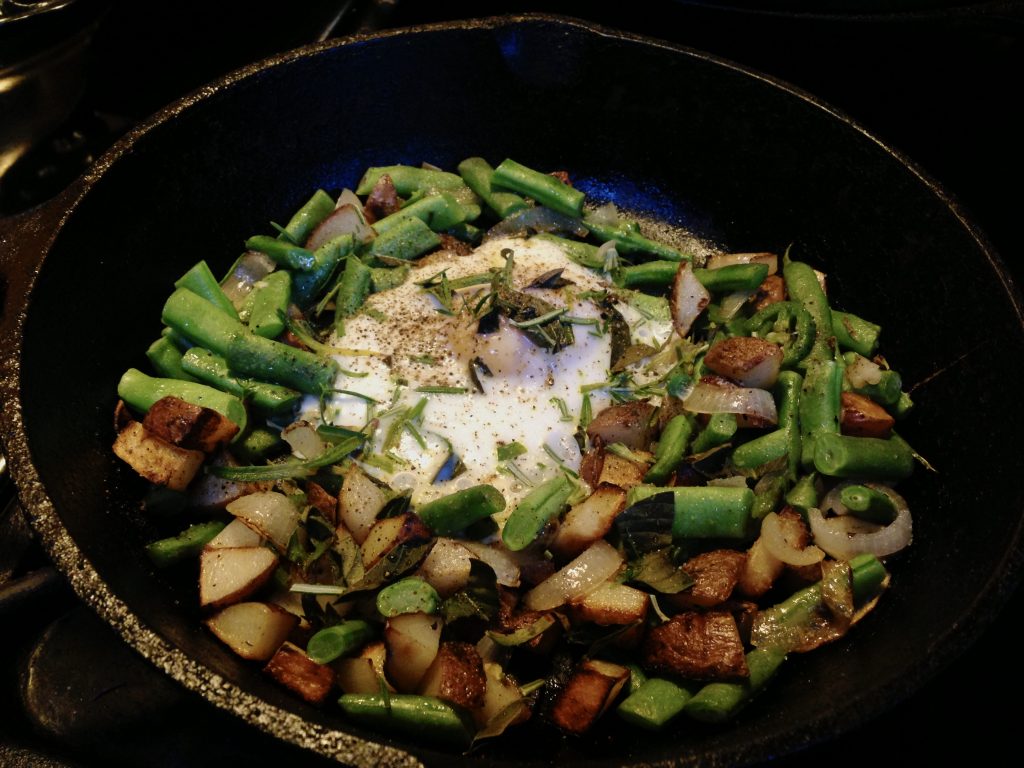
Why Cast Iron?
Cast iron pans are the ultimate indestructible cook pan (they will likely outlive you), and they’re made with an all-natural material that actually benefits your health when it leaches into your food. When you cook in a cast-iron pan, the food you eat will have increased iron content, particularly if it’s acidic and/or cooked for a longer period of time.
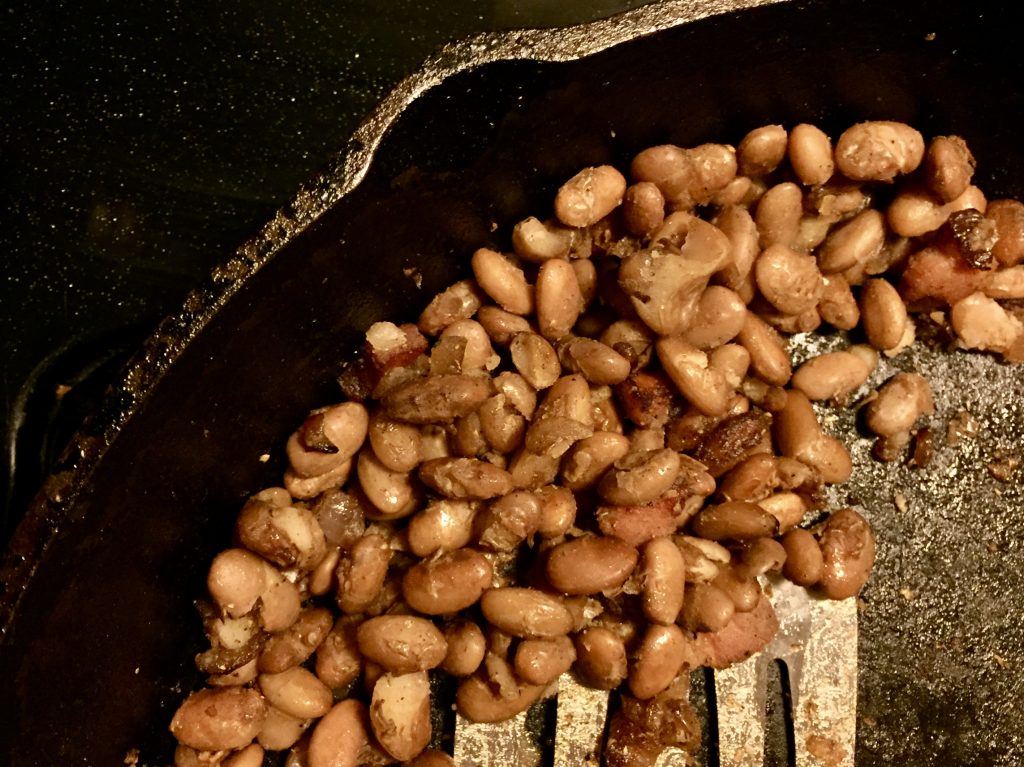
How much more iron? This varies widely, but according to one study, the increase ranged from about .5 to 5 mg more iron per serving. Applesauce jumped from .35 to 7.38 mg, but I don’t know anyone who actually makes applesauce in a cast-iron pan. Other studies show about 5 more mg of iron in pasta sauce (acidic), 2 more mg in a fried egg, 1 more mg in rice, and less than 1 mg in foods like burger, bacon, or pancakes. Most adults need just 8 to 15 mg of iron in the diet daily (menstruating and pregnant women need more than men). While it is possible to overload on iron – particularly with dietary supplements – and people who have excess iron in the blood should avoid cast iron, most Americans would do well to cook more with these durable pans. Adequate iron levels help build the blood and make us feel more energized. Other benefits of cast iron? A well-seasoned pan surpasses any other pan for sautéing and roasting. It’s much less apt to stick than stainless steel and aluminum and doesn’t pose the dangerous leaching carcinogen tendencies of nonstick pans like Teflon (though I do keep my non-stick Ecolution on hand for the occasional crepe or omelet). Cast iron also gives an unsurpassed browning effect to food and is a lot easier to clean, IMHO.
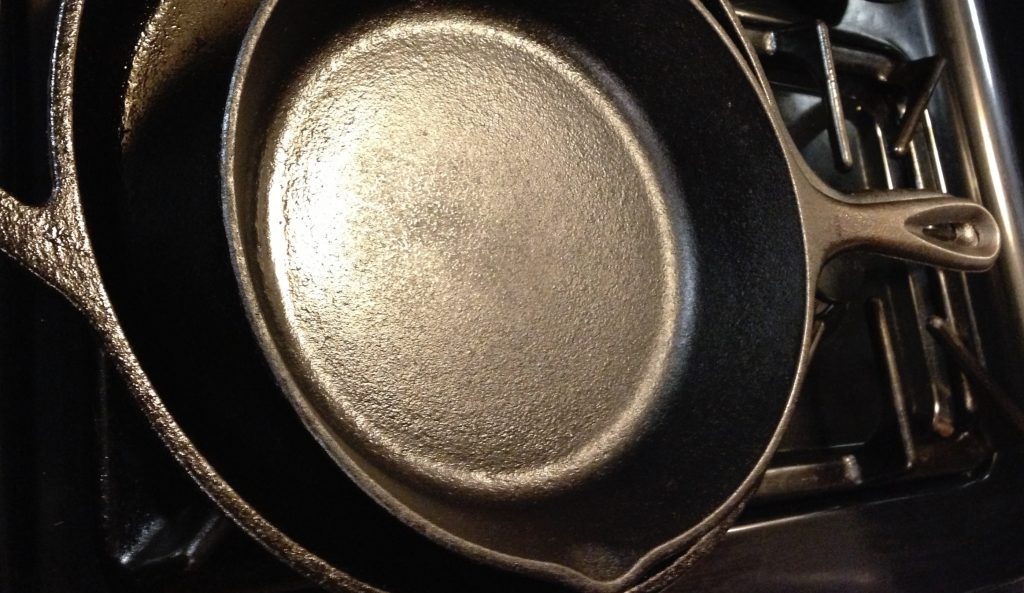
Purchasing & Cleaning Basics
If you don’t already have a cast-iron pan and are considering purchasing one, you have the option of buying pre-seasoned or unseasoned pans. They are available at most stores that sell kitchen products – you’ll spend more at a fancy kitchen store and less at mom-and-pop hardware stores or "Wally World" for the exact same thing.
Purists may prefer the unseasoned pan. You season it by washing it then coating it with vegetable oil (unsalted butter, shortening, or any vegetable oil will work), then heat it for several hours in the oven. Unfortunately, this process – which bakes the oil seasoning into the pan, darkening it over time – also oxidizes the oil on the pan, making a toxic, nasty, smoky mess in your house. You may want to do it outside on the grill, or just buy the pre-seasoned pans.
For regular maintenance, wash the pan with a stiff bristle brush - no soap! - and dry the pan immediately after use, then coat it with a thin layer of oil (shiny but not sticky, explain the experts at Lodge Cast Iron). I simply scrub with hot water and my bristle brush, then dry it right on the stove until the water has evaporated. Then give it a quick white with oil and let that sink in before shutting off.
Soap is generally not recommended or necessary because it will eat away the seasoning you’ve worked so hard to build. But if you must, use mild soapy water and be sure to dry and oil it well right away.
Avoid the urge to leave pans soaking or filled with food for hours – they will eventually rust. If rust happens, reclaim your pan by scrubbing it away with steel wool, then do a thorough re-seasoning.
If your cast iron has been sitting for a long time (months? years?), you may find that the finish has a sticky consistency and rancid oil smell – it’s worth giving it a thorough scrubbing – possibly with soap – and re-seasoning before cooking in it or that off taste may get into your food.
Don’t let all these instructions freak you out. Cast iron takes no more time to keep clean and in good condition than any other set of pans. Regularly used pans just need a quick scrub, dry, oil – maybe two minutes of work, tops!
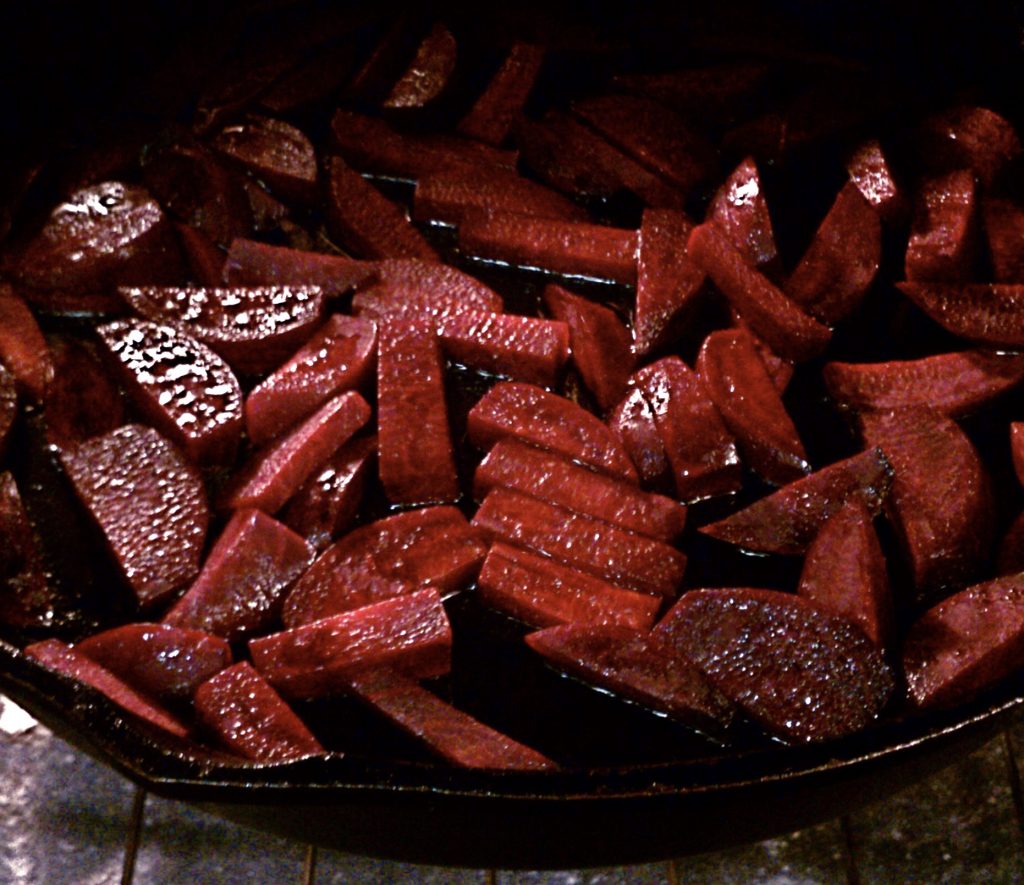
What Can You Cook In Cast Iron?
Technically, anything, but cast iron shines for sautéing, searing, and roasting of any sort, on the stove top or in the oven. You can buy cast iron lids if you want to cook things like chicken or bread covered in the oven. If you want a lid for stove-top work, simply repurpose any pan lids you have on hand. I have a flat-bottomed dutch oven that is *awesome* for roasting local free-range, pasture-raised chickens. I cook the chicken covered for about 20 minutes at 550°F, then turn the temp down to 350°F, take the lid off, and cook for another 30 minutes or so until my thermometer tells me it’s done, the skin is browned, and the juices run clear. Consider standard shallow-bottomed cast-iron pans for baking quiche. Lidded cast-iron dutch oven pans have become famous for making no-knead round loaves of homemade bread that rival those of fancy brick ovens. Here’s a short list of my favorite things to cook in cast iron:
- Scrambled and fried eggs
- Roasted potatoes (in the oven) and pan fries (on the stove top with a lid). Ditto for match-sticked or tiny cubes of beets or sweet potatoes.
- Roasting chunks of winter squash or a whole winter squash that has been cut in half
- Roasting Brussels sprouts after a quick steam with water or wine
- Sautéing kale, arugula, or other greens and making kale chips
- Baking quiche and cornbread that looks very fancy on the dinner table served in the pan
- Roasting chicken
- Making soups that start with sautéed ingredients (though I prefer enameled cast iron for this, regular cast iron sometimes lends an off flavor)
- Baking bread, with or without a lid (enameled pans smoke less at high bread temps)
- Sautéing fried rice, corn dishes, and other grain dishes, stir fries, etc.
- Making skillet “baked” beans on the stovetop
- Poaching eggs in hash browns or greens
- Korean-inspired knock offs of bibimbap/stone bowl
- Pan-frying (particularly in butter) choice cuts of wild game or grass-fed meats, fish, etc. for a special night’s dinner. Yes, it’s also great for seasoned cubes of tofu, too!
- Pan-frying seasoned eggplant, veggie burgers, croquettes, etc.
For those of you with those glass stove tops on which cast iron is risky, I feel sorry for you! (While you can use cast iron on glass stove tops, you might scratch or otherwise damage your stove -- you can find some cast-iron on glass top tips here. But it's risky and one of several reasons I"m not a huge fan of glass stovetops.) Perhaps in another blog I'll wax poetic about my gas range...
Happy Cookin’!
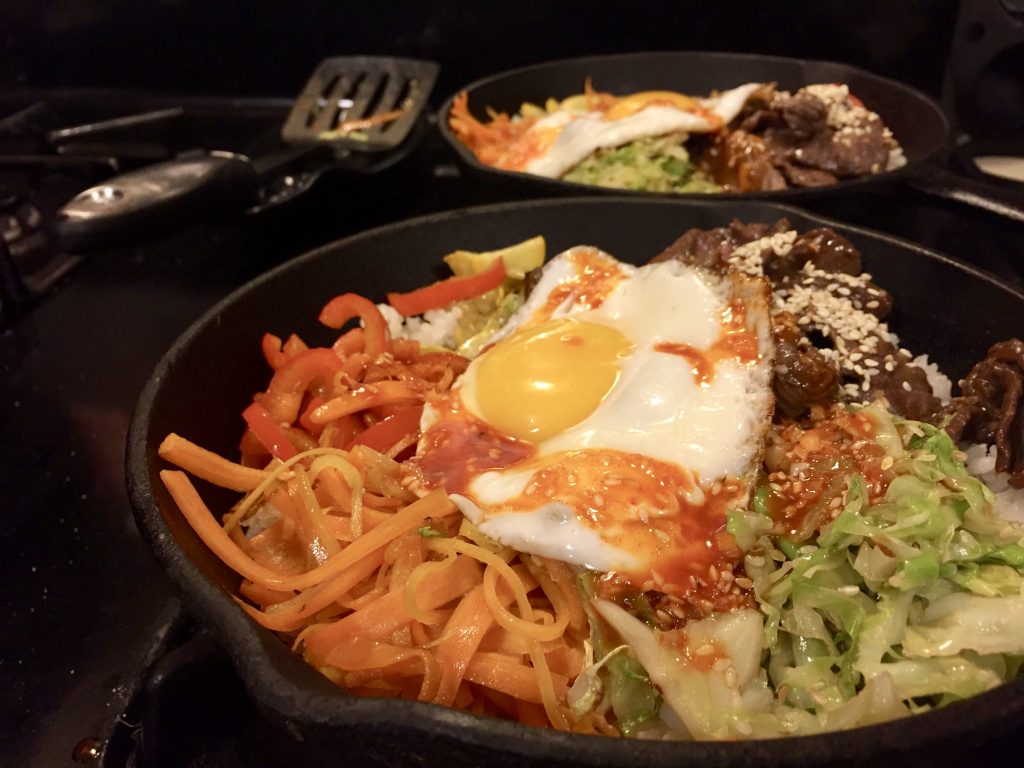
Clinical herbalist Maria Noël Groves sees clients and teaches classes at Wintergreen Botanicals Herbal Clinic & Education Center in Allenstown, New Hampshire.
The statements made on this blog have not been evaluated by the FDA and are not intended to diagnose, prescribe, recommend, or offer medical advice. Please see your health care practitioner for help regarding choices and to avoid herb-drug interactions.
This blog originally appeared on the Concord Food Co-op site and has been reprinted with permission.
